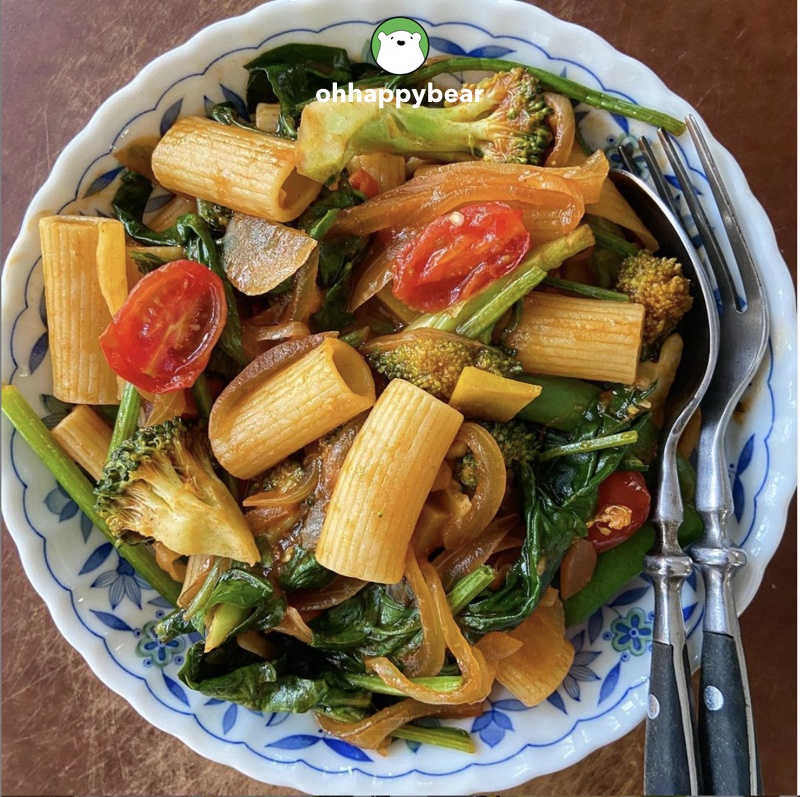May 19, 2021, Bangkok – There’s one book that I never dare to read. And it is ‘Eating Animals’ by Jonathan Safran Foer. I have it on my Kindle for years, since the day I first heard about it. Because of my own dreadful anticipation of what would be ahead on those pages, I just left the book be and continued obliviously eating whatever I wanted.
Instead of announcing myself as a ‘vegetarian,’ or ‘vegan’ and then failed spectacularly, I decided to simply add more and more vegetables to our plates, and by that, semi-replace the meats that were once there in the full portion.
Not too long ago though, I decided to give myself yet another try. This time, instead of announcing myself as a ‘vegetarian,’ or ‘vegan’ and then failed spectacularly, I decided to simply quietly add more and more vegetables to our plates while also skipping meats as much as I could (or would). And here is what I found. When not fixated on the terminology of what I’ll become via my food choices, I became much less stressed. As it turned out, I have successfully been eating more vegetables and cutting a lot back on meat! No more frozen porks and chicken to standby but bags and packed of pre-cooked vegetables and legumes. This is a private achievement that doesn’t need any labelling. So free and still so mindful.
Out of health concerns, I also cut back almost totally on processed foods. A lot of my former favourites have to go: crispy bacon, Thai-style sour sausage or Naem, canned pickles, sun-dried fishes, or anything with obscure origins yet obviously industrially manufactured. And I am feeling great about all that! I am eating so much healthier without feeling that I am missing anything. I am having fun experimenting with a lot more kinds of vegetables. Here are a few things I pick up along the way. Consider it a lesson learned in my own small kitchen.
1. Vegetables are tasty and they are great at mixing up. I recently broke the barriers of the old beliefs or recipes that call for certain types of vegetables in certain dishes. For example, stir-fried Chinese Bok Choi, I found, can include other vegetables and still make the outcome delicious and more healthy. The more I cook vegetables, the more I am familiar with their tastes. With those recognitions, I could build more mixed-veggie recipes of my own. I like balancing mild and nutty greens with something bright and sweet while also imagining contrasting textures to make the dish even more wholesome. Below is my stir-fried napa cabbage that is usually paired with assorted mushrooms, but then I threw in some sliced carrots and ginger, for sweetness and brightness. Delicious. One tip: different vegetables cook at different times. Add whatever cooks longer first into the pan, followed by fragile people such as spinach or green onion.
If there’s one thing as easy as a turnkey solution in the kitchen, it is learning how to plan your meals and prep your food prior.
2. Colour your food, brighten your mood. I now enjoy making my salads from whatever I have in the fridge. No fixed agenda. This comes with my newfound love affair with food preps. Yes, it takes an amount of time. But then, I found it to be so rewarding. Pumpkin needs to be pre-steamed and packed, chickpeas the same, other legumes the same. I pre-wash leaves, all things that take time soaking and rinsing, and keep everyone in tight containers, nice and cool in the fridge. Assembling a bowl of salad or whatever then becomes so much easier. Just chop everything up, mix a bit of dressing (olive oil, rice vinegar or limes, and salt for me). If I happen to have toasted sesame on hand, then, that would go on top of that bowl as well.
Some more tips here:
- Thinly sliced onions of all kinds are an instant sharpener of my salads. I don’t even bother to ‘pickle’ them because I already love their original soulful brightness.
- Boiled or fresh sweet corns add a sweet burst and crunch.
- Red, black, black-eyed, even sprouts work better when mixed together.
- Legumes, potatoes, pumpkins are instant creamers. These guys are cheap and healthy and tasty! I am now a fan of bagged chickpeas, black-eyed peas, red beans, or even job’s tears. They cook differently though, but then I have all the time in the world.
3. No-recipe recipes are the way to go. I once accidentally yet successfully made a wholesome delicious dish out of rice noodles, a few wedges of cabbages, green onions, and tofu. I stir-fried everything (pre-soak the noodle) with soy sauce, chilli flakes, and add some good glugs of rice vinegar and sprinkles of flake chillies at the end. I cooked it. Ate it. Liked it.
I use soy sauce a lot in my pasta dishes. I use rice vinegar which I found carries a distinct aroma which is great in salads. Growing up eating Thai foods helps a lot here.
4. Use whatever I have on hand. Thai flavourings come into play. A lot. I grew up eating tasty foods, and I am not going to give that up now. Thai food carries so many tastes in one bite: sour, sour+aroma, salty, salty and shrimpy or fishy, sweet, sweet+hint of burnt palm sugar, sournesses of different citruses and the lovely pale green bilimbi fruits, and so on. You name it. And that’s what I am doing all the time with my more veggie plates. For example, instead of using salt, I use soy sauce a lot in my mixed-vegetables pasta dishes. I use rice vinegar which I found carries a distinct aroma which I like in salads. Growing up eating Thai foods helps a lot here.
© OHHAPPYBEAR

